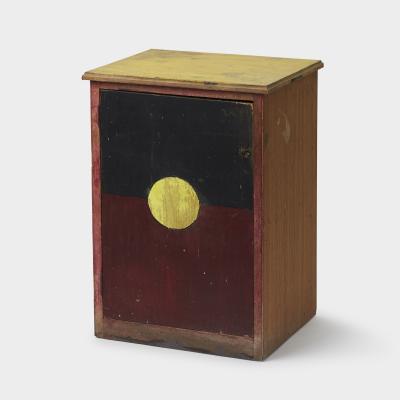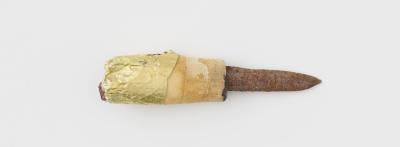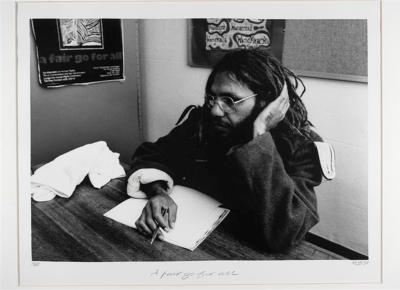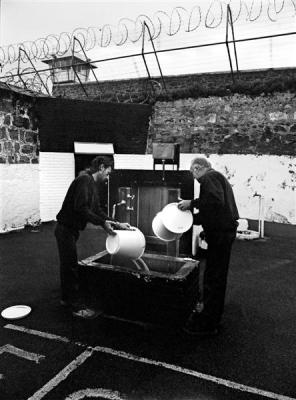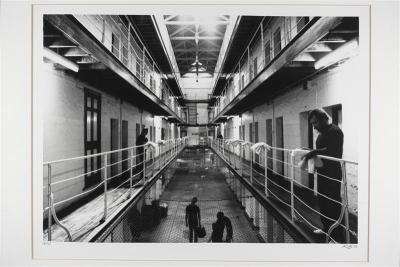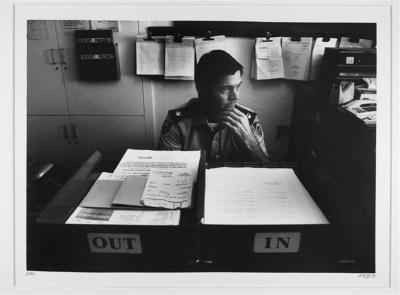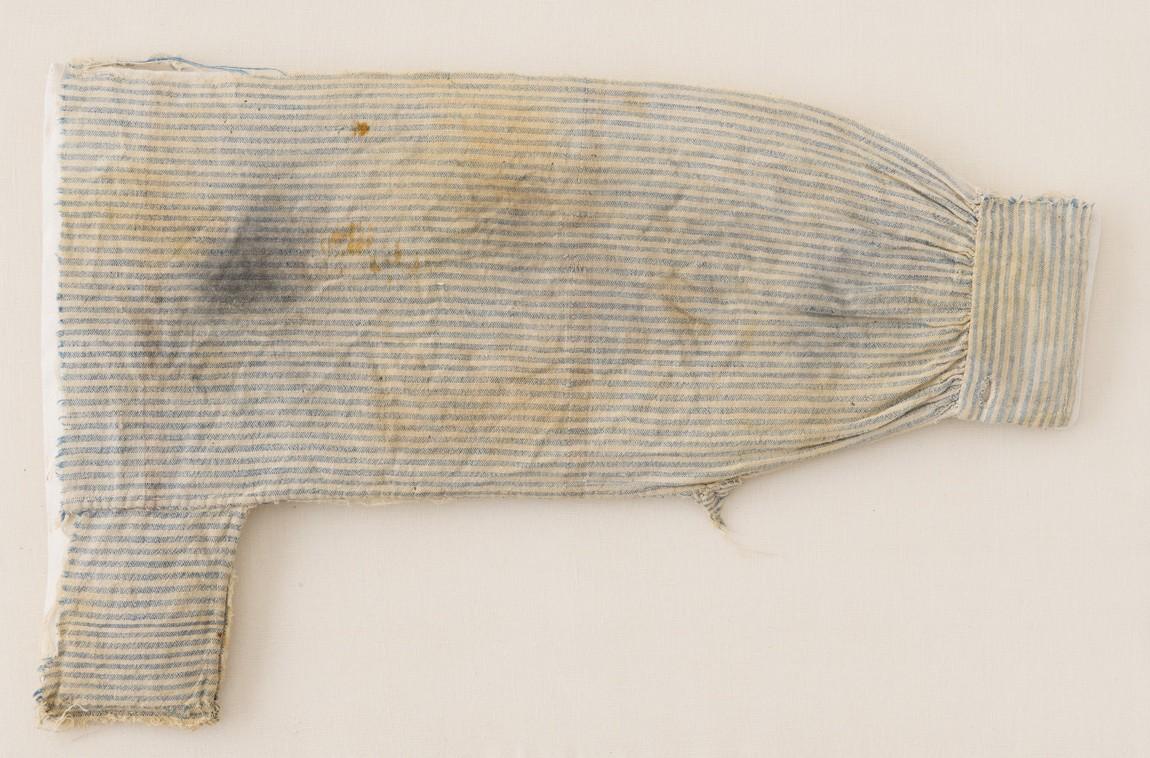Convict Shirt Sleeve
c. 1850 - 1886Long, blue and white stripe, cotton shirt sleeve. Shirt sleeve has been torn along one seam, leaving only one side of the sleeve intact. The cuff is hand stitched to the sleeve, with gathering at the attachment. The buttonhole on the cuff is hand stitched around the edge. There is hand stitching along the lower section of the sleeve, with a small rectangular piece of matching cloth attached. Two bands, approximately 10mm wide in a faded red colour, became visible on the fabric after conservation work was carried out.
Found during the Underfloor Archaeology Excavation Project, that took place in the Main Cell Block of Fremantle Prison in 2019. Found under the floorboards of cell G2, in 1 Division of the Main Cell Block, on 27 November 2019.
Details
Details
The most significant part of Fremantle Prison is the ‘Main Cell Block’, a four-storey cell block constructed in the 1850s from limestone excavated by convicts on site designed to accommodate up to 1000 men. Within the walls of many of the cramped cells in this building remains incredible examples of daily life as a prisoner, including graffiti, art, and objects hidden or lost beneath the jarrah floors. In 2019, State and Federal governments injected significant funding to conserve failing lathe and plaster ceilings within the cells of the Main Cell Block at Fremantle Prison. Following the removal of floorboards to access the ceilings of the cells below, stashes of objects dating from the convict era to 1991 were found. A team of seven archaeologists worked over a period of five months and salvaged 1.4 tons of material from 34 cells. The resulting collection of artefacts is likely one of the most significant in Australia for its ability to provide information about 134 years of incarceration. This material is being carefully sorted, catalogued, studied, and conserved, revealing how prisoners lived and coped behind doors away from the eyes of authority.
